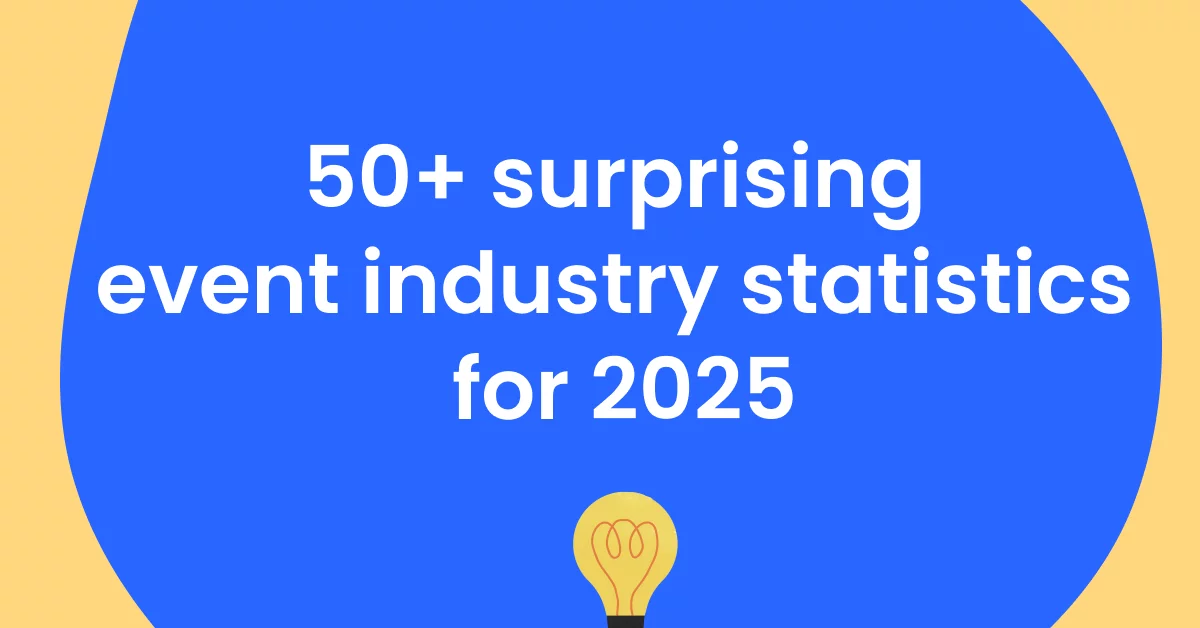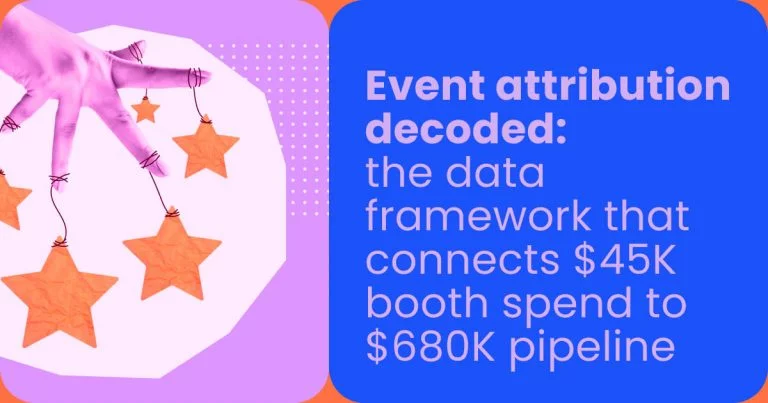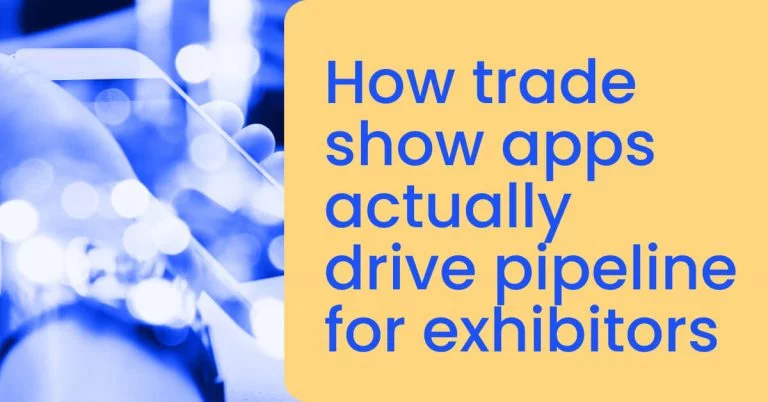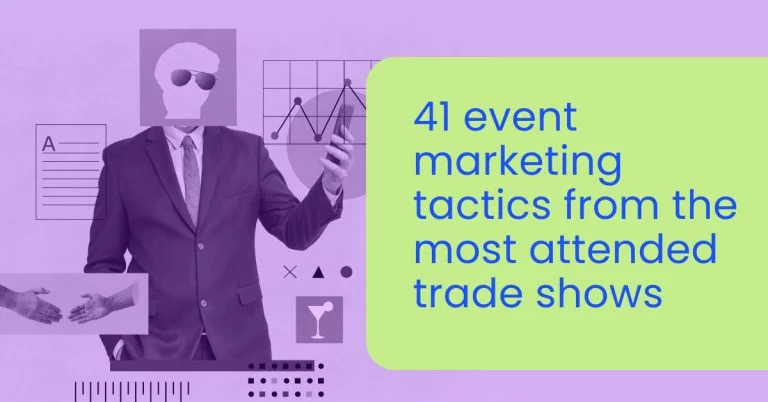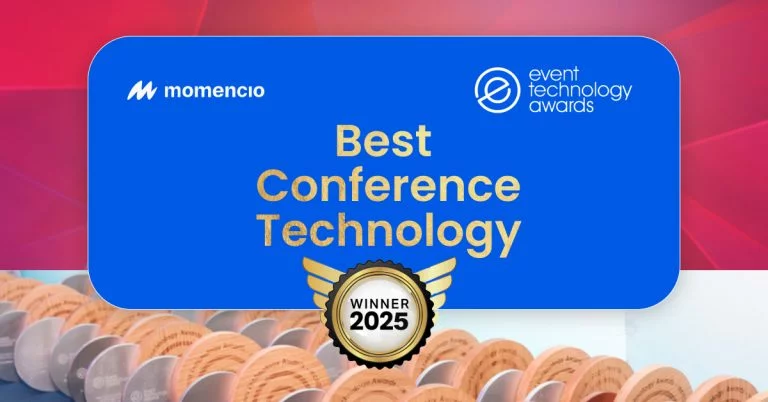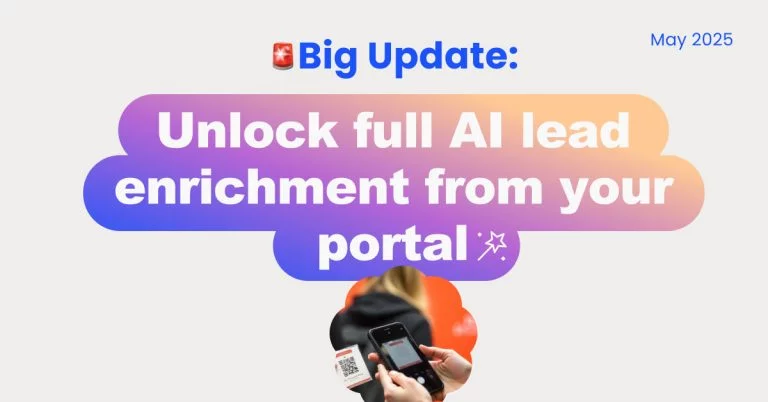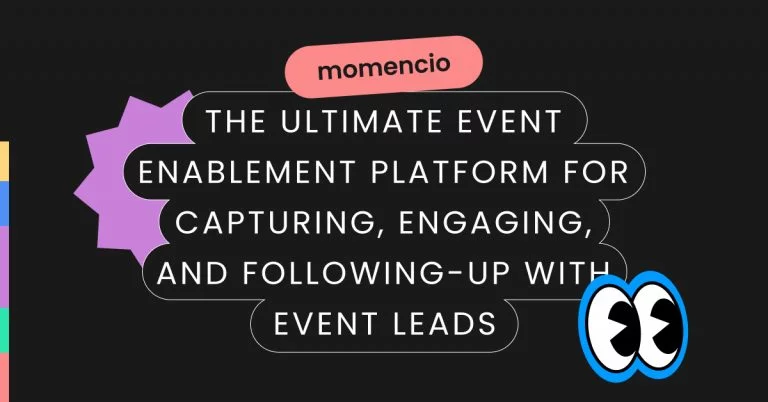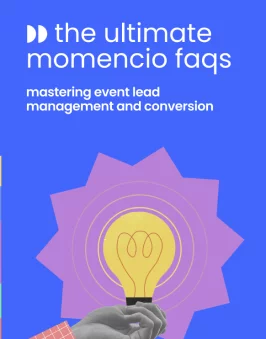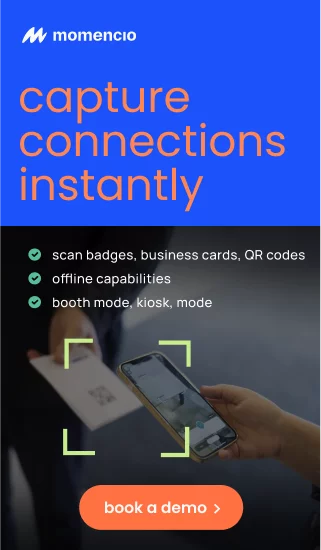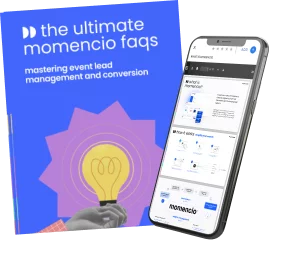After a period of immense disruption and adaptation, the event ecosphere is now being shaped by cutting-edge technologies and an increased focus on attendee experiences. With in-person events evolving beyond traditional trade shows and conferences to become immersive, interactive, and personalized experiences, and virtual elements paving a path of itself, event professionals are tasked with balancing innovation, engagement, and ROI.
In fact, recent projections show that the event industry could surpass $1.5 trillion by 2028, a testament to its robust growth and the opportunities that lie ahead. Whether you’re an event planner, marketer, or venue manager, understanding the key data points driving this growth is crucial to staying ahead of the curve.
This article is a treasure trove of curated event industry statistics that would help your company plan and strategize for your event success in 2025. This is a gold mine of data. From attendee preferences and event tech to budgeting and ROI measurement, each statistic comes packed with actionable tips and insights on how it could help in shaping a winning strategy for your business in 2025.
2025 Statistics for Event Industry Growth
- The global event industry is forecasted to exceed $1.5 trillion by 2028, growing at an impressive annual rate of 11.2%. (Source: Allied Market Research)
What this means for you: This rapid growth signals a significant opportunity for event professionals to expand their reach and services, particularly in hybrid and virtual formats. To stay competitive, consider diversifying your offerings to meet the rising demand for both digital and in-person experiences.
- In coming years, over 86% of event organizers planned to either maintain or increase the number of in-person events compared to 2023. (Source: G2)
What this means for you: In-person events are making a strong resurgence, and now is the time to invest in creating memorable face-to-face experiences. Event planners should focus on optimizing in-person interactions, while ensuring health and safety protocols are in place to cater to evolving attendee expectations.
- By 2028, the event industry’s market value is expected to surpass $2 trillion, driven by increased investment in events. (Source: G2)
What this means for you: The expanding market offers a tremendous growth opportunity, particularly for those who can adapt to new event formats and integrate advanced technologies. To capture a larger share of this growth, focus on delivering innovative and high-impact event experiences.
- The event management software market is projected to grow to $16.11 billion by 2026. (Source: Fortune Business Insights)
What this means for you: As more event professionals turn to technology to streamline operations, now is the time to invest in powerful event management software. Tools that offer seamless registration, real-time analytics, and attendee engagement will become indispensable for delivering successful events.
- Around 67% of executives expect meeting budgets to increase in 2024, reflecting growing confidence in the value of events. (Source: G2)
What this means for you: With bigger budgets comes greater flexibility. Event professionals should focus on implementing advanced technologies, upgrading venue experiences, and enhancing attendee engagement. A strong emphasis on ROI-driven decisions will help justify the increased spending and show value to stakeholders.
Check out: Best USA Trade Shows for Business Growth and Networking in 2024
2025 Statistics for Event Types and Formats
With the event landscape becoming more diversified, organizers are experimenting with multiple formats, from in-person gatherings to hybrid and fully virtual events. While in-person events are seeing a resurgence, the flexibility and reach of virtual and hybrid events have solidified their place in the industry. Understanding how these formats are evolving is crucial for event professionals looking to tailor experiences to the changing needs of their audiences.
- Over 80% of meetings in 2024 included in-person component. (Source: G2)
What this means for you: While virtual events served as a lifeline five years back, the demand for face-to-face interactions is growing stronger. Event planners should focus on creating hybrid events that combine the immediacy of in-person experiences with the flexibility of virtual components to engage a broader audience.
- A striking 90% of event organizers believe that large-scale events will either be remote or hybrid in the next two years. (Source: MPI)
What this means for you: The future is undeniably a blend of in-person and virtual. As technology continues to evolve, ensuring that both your in-person and remote audiences have seamless, engaging experiences is vital. Invest in event technology that supports real-time interaction for all attendees.
- 78% of event marketers are committed to hosting on-site events in the future. (Source: Upmetrics)
What this means for you: The return to on-site events is not just a temporary trend but a strategic move for many organizers. Focus on enhancing physical environments with interactive elements and superior networking opportunities to meet this renewed interest.
- Currently, 81% of event managers report that they are actively organizing virtual events. (Source: Sweap)
What this means for you: Virtual events are here to stay, especially for organizations looking to extend their reach beyond geographical boundaries. To stand out, leverage virtual platforms that offer interactive features like virtual booths, Q&A sessions, and gamified engagement.
- Average number of events increased by 52% in 2024 as compared to 2023. (Source: Meetings Today)
What this means for you: This data underscores the growing confidence in physical gatherings. As event planners, it’s crucial to ensure that your in-person events provide not just content but also immersive experiences that virtual attendees can’t easily replicate.
Learn: 5 Key Differences and Insights: Trade Shows vs Conferences vs Expos vs Conventions
2025 Statistics for Attendee Preferences and Behavior
As the event industry evolves, understanding attendee behavior and preferences is crucial for creating engaging, personalized experiences. Today’s attendees expect more interaction, meaningful connections, and experiential elements that align with their values and interests.
- More than 61% of millennials and 63% of Gen Z attendees plan to attend more global events in 2025 and beyond. (Source: G2)
What this means for you: With younger generations prioritizing global participation, it’s essential to provide hybrid or virtual options that appeal to these demographics. Tailoring content to cultural preferences and offering real-time networking will help attract a diverse audience.
- Nearly 55% of Americans report that attending events makes them feel more connected to others and their communities. (Source: G2)
What this means for you: Building a sense of community should be at the core of your event strategy. Design interactive sessions, collaborative workshops, and social gatherings that foster genuine connections among attendees, making them feel part of something bigger.
- 54% of Americans would prefer receiving a ticket to a live experience over a physical gift. (Source: G2)
What this means for you: The growing value placed on experiences over material items indicates that event organizers should focus on creating unique, memorable in-person experiences. Consider offering exclusive event passes or experiential rewards as part of your marketing efforts.
- Approximately 65% of consumers feel they understand a product or service better after experiencing it at a live event. (Source: Forbes)
What this means for you: Incorporating live demonstrations and product showcases into your event can significantly impact your audience’s understanding and engagement. Prioritize immersive, hands-on experiences that allow attendees to interact with your products or services firsthand.
- Over 67% of event attendees say that having free time outside of structured sessions, parties, and networking is essential to their overall event experience. (Source: G2)
What this means for you: Attendees value downtime to relax and engage organically with others. Make sure to build sufficient “white space” into your event schedule, giving participants room to recharge and connect in informal settings.
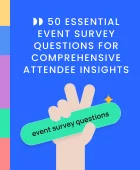
2025 Statistics for Event Marketing and Promotion
Event marketing remains a crucial driver of brand awareness and lead generation for many businesses. As the landscape shifts with the adoption of new technologies and diversified promotional tactics, understanding how companies are investing in and executing event marketing is key to staying competitive.
- On average, 14% of a company’s marketing budget is allocated to event marketing efforts. (Source: G2)
What this means for you: With a significant portion of marketing budgets devoted to events, it’s essential to ensure that these efforts deliver measurable results. Invest in marketing tools that can track attendee engagement and conversions to optimize ROI and justify continued or increased spending.
- U.S. companies collectively spend around $122 billion annually on event marketing. (Source: Persuasion Nation)
What this means for you: Event marketing is a high-stakes investment. To stand out in a competitive market, businesses need to focus on innovative event formats, superior attendee experiences, and data-driven marketing strategies that generate meaningful leads.
- 79% of U.S. marketers utilize event marketing specifically to generate sales leads. (Source: Persuasion Nation)
What this means for you: If lead generation is a primary goal, it’s critical to create events that facilitate direct interactions between attendees and your brand. Incorporate lead capture technology, such as QR codes or interactive experiences, to ensure you are collecting valuable data on potential clients.
- 28% of businesses use event marketing as a direct support mechanism for their sales teams.
What this means for you: Event marketing isn’t just about awareness—it’s a powerful tool to directly fuel your sales pipeline. Ensure that your event aligns with sales goals by creating opportunities for follow-up, offering personalized post-event engagement, and fostering strong sales-marketing alignment.
- The number of promotional methods used by event marketers increased from 4.79 to 6.5 on average in 2023. (Source: Vesta)
What this means for you: As event promotion becomes more multifaceted, it’s important to diversify your marketing approach. Explore new channels such as social media campaigns, email marketing, influencer partnerships, and content marketing to drive higher attendance and engagement.
Check out: Winning Strategies To Overcome Trade Show Event Marketing Hurdles
2025 Statistics for Event Technology and Software
Technology is playing an increasingly central role in the event industry, with innovations like AI, virtual reality, and event management platforms transforming how events are planned and executed. Embracing these technologies is critical to staying competitive and delivering high-quality, engaging experiences for attendees.
- Over 85% of event planners now rely on event management software to streamline their operations. (Source: G2)
What this means for you: Event management software is no longer optional—it’s a must-have for organizing seamless events. Look for platforms that offer features like real-time analytics, attendee tracking, and automated registration to optimize efficiency and enhance your event’s overall success.
- Roughly 67.4% of event planners are either considering or have already switched to a new event software platform. (Source: G2)
What this means for you: As technology advances, event professionals are seeking more versatile and user-friendly platforms. If your current software isn’t meeting your needs, explore alternatives that offer better integrations, enhanced features, and a more intuitive user experience to stay competitive.
- About 72.5% of event organizers believe that their event management platform played a critical role in the success of their most recent event. (Source: G2)
What this means for you: The right software can make or break an event. Choose a platform that not only simplifies planning but also provides actionable data, supports attendee engagement, and offers tools that measure the success of your event in real-time.
- Over 65% of event planners say they will incorporate technologies like onsite check-in tools (53%), QR codes (49%), artificial intelligence (42%), and virtual reality (40%) in their upcoming events. (Source: G2)
What this means for you: Incorporating advanced technologies is becoming standard practice for leading events. Consider how tools like AI and virtual reality can enhance your attendee experience by personalizing content, creating interactive environments, and automating processes like check-in.
- Around 86% of event marketing professionals believe that technology has a significant positive impact on event outcomes. (Source: Persuasion Nation)
What this means for you: Investing in the right technology will yield tangible benefits, from improved attendee engagement to more efficient planning and execution. Focus on tools that not only enhance the attendee experience but also provide measurable outcomes to demonstrate event success.
Read: The Role of Technology in Maximizing Event ROI
2025 Statistics for Event Budgets and Pricing
As the event industry grows and evolves, so too do the budgets that fuel it. Event planners are seeing increases in both ticket prices and overall spending as they strive to deliver better experiences and leverage more advanced technology. Understanding how to allocate these rising budgets effectively is key to maximizing ROI.
- Around 60% of event organizers plan to raise their ticket prices. (Source: Vesta)
What this means for you: As ticket prices rise, attendees will expect more value in return. Focus on enhancing the attendee experience with upgraded networking opportunities, exclusive content, and immersive experiences that justify the increased cost of entry.
- The average ticket price in 2024 is was $41.90, with larger organizations charging closer to $59, while smaller organizations average $19 per ticket. (Source: Vesta)
What this means for you: Knowing your audience’s willingness to pay is essential. Larger organizations may be able to charge more due to higher production values or exclusive experiences. For smaller organizations, offering tiered pricing or added value perks can help drive sales even at a lower price point.
- In 2024, event marketers saw a 23% increase in their budgets. (Source: Marketing Week)
What this means for you: Increased budgets give event organizers more freedom to innovate and enhance their events. To make the most of this, invest in technologies that provide measurable improvements in engagement and efficiency, ensuring your spending yields a high return on investment.
- Hosting a large virtual conference costs organizers between $1,000 and $1,500 per attendee. (Source: Market)
What this means for you: Virtual events can be costly, but the per-attendee price is often justified by the ability to reach a larger audience without the logistical limitations of an in-person event. Focus on maximizing engagement and ensuring that virtual attendees have a seamless, value-rich experience.
- Corporate event spending is expected to increase in 2025, with the cost per attendee rising to $169 per day. (Source: HR Asia)
What this means for you: As corporate budgets grow, there’s more room to explore high-end venues, premium experiences, and advanced tech solutions. Ensure that your event offers clear value to corporate sponsors by focusing on measurable engagement metrics and post-event ROI reporting.
2025 Statistics for Event Locations and Venues
The selection of event locations and venues plays a critical role in shaping the attendee experience. As events return to in-person formats, organizers are faced with new considerations, such as health and safety protocols and the influence of destination appeal on attendance. Understanding these trends is key to ensuring successful venue selection.
- The top five meeting locations in North America for 2024 were Las Vegas, New York City, Los Angeles, Chicago, and Toronto. (Source: G2)
What this means for you: These cities continue to dominate as prime meeting destinations due to their infrastructure, accessibility, and appeal. If you’re planning large-scale events, these cities offer a range of venue options that cater to both corporate and social gatherings.
- In Europe, the leading meeting destinations for 2024 were London, Barcelona, Madrid, Amsterdam, and Paris. (Source: G2)
What this means for you: Europe’s iconic cities remain hotspots for international meetings and conferences. To attract global attendees, consider hosting your event in one of these high-profile locations, which offer strong tourism appeal and world-class venues.
- About 28% of event attendees consider the region’s safety and health protocols when selecting whether to attend an event in that location. (Source: G2)
What this means for you: Health and safety measures are still top of mind for attendees. To boost attendance and offer peace of mind, choose venues that adhere to strict safety protocols and communicate these measures clearly in your marketing materials.
- Over 43% of event planners use platforms like Facebook, WhatsApp, and Slack event communities to find venues. (Source: G2)
What this means for you: Social media and online communities are becoming valuable resources for venue discovery. If you’re sourcing venues, consider joining event planning groups and communities where planners exchange recommendations and tips on the best locations.
- Approximately 46% of organizations held their internal meetings in a city outside of their headquarters’ location in 2024. (Source: G2)
What this means for you: As more organizations look to host offsite meetings, cities with strong infrastructure and attractive meeting spaces are poised to see a surge in demand. Planners should focus on selecting cities that not only offer high-quality venues but also enhance the overall meeting experience for participants.
2025 Event industry statistics to identify challenges and priorities
The event industry is rapidly evolving, and while opportunities are expanding, planners are also facing new and ongoing challenges. From rising attendee expectations to sourcing venues and incorporating sustainability practices, it’s essential to address these concerns to ensure long-term success.
- Over 52% of event planners cite increasing attendance as their biggest challenge. (Source: G2)
What this means for you: As competition for attendee attention grows, it’s crucial to offer unique value propositions for your event. Focus on creating compelling content, personalized experiences, and robust networking opportunities to attract more participants and differentiate your event.
- About 42.6% of organizers report that receiving timely venue proposals is their largest venue sourcing challenge. (Source: G2)
What this means for you: To overcome venue sourcing delays, build strong relationships with venue managers and start the proposal process early. Using event management platforms that streamline venue communication can also help expedite responses and reduce sourcing frustrations.
- Roughly 26.8% of attendees say that sustainability and diversity, equity, and inclusion (DEI) are their top priorities when choosing an event to attend. (Source: G2)
What this means for you: Event planners must prioritize sustainability and DEI initiatives to meet attendee expectations. Incorporating eco-friendly practices like reducing waste, using recyclable materials, and creating diverse and inclusive programs can make your event more appealing and socially responsible.
- More than 50% of companies are reducing their event emissions by minimizing waste and focusing on recyclable materials. (Source: G2)
What this means for you: Sustainable practices are not just a trend but a priority for event organizers and companies. Ensure your event implements eco-friendly practices, such as using digital tickets, reducing paper waste, and partnering with venues that have green certifications.
- Inflation is affecting over 65% of event organizers, leading to increased costs across various event elements. (Source: Vesta)
What this means for you: With inflation driving up costs, budget management becomes more critical. Look for cost-effective solutions that don’t compromise on quality, such as leveraging technology to streamline logistics or negotiating better deals with vendors by committing to long-term partnerships.
Learn: Boost Event Sales and Master the Art of Networking
2025 Statistics for Event ROI and Measurement
Measuring the return on investment (ROI) for events is becoming more critical as stakeholders demand proof of success and value. Yet, many event organizers struggle with collecting the right data and using the tools available to assess their events’ true impact. Understanding the key metrics that drive event ROI can help planners optimize future strategies and improve overall outcomes.
- The average ROI for events typically falls between 25% and 34%. (Source: Event Pipe)
What this means for you: While these figures represent a healthy return, there’s always room to increase your event’s profitability. Focus on tracking engagement metrics, lead conversion rates, and post-event surveys to better understand where you can optimize your event’s impact and grow your ROI.
- Around 82% of event marketers are unable to quantify the data they receive from attendees’ interactions. (Source: LLC Buddy)
What this means for you: Lack of data hinders your ability to make informed decisions. Invest in event technology that tracks key metrics, such as attendee engagement and lead generation, to ensure you have the insights necessary to evaluate your event’s effectiveness.
- Approximately 26% of event marketers say they lack the time to effectively measure the success of their events. (Source: LLC Buddy)
What this means for you: Time constraints shouldn’t be a barrier to measuring success. Automating data collection and using platforms with built-in analytics can help you gather the metrics you need without overwhelming your team. Prioritize post-event reports to continually improve your strategy.
- About 19% of companies are unaware of their event’s ROI, citing difficulties in tracking results. (Source: Marketing Charts)
What this means for you: Not knowing your event’s ROI means missing out on valuable insights that can improve future performance. Ensure your team has the right tools and processes in place to track data across the entire event lifecycle, from lead capture to post-event follow-ups.
- 47% of event marketers believe that in-person events have the highest ROI and are a key factor in driving future success. (Source: NextGen)
What this means for you: Virtual events are here to stay, and they play a crucial role in expanding reach and enhancing attendee engagement. Make sure you are measuring not only the direct financial returns but also the longer-term impact of virtual components, such as ongoing engagement, content consumption, and lead nurturing.

2025 Statistics for Miscellaneous Event Statistics
Beyond the core elements of event planning, marketing, and ROI measurement, several interesting trends are shaping the future of the event industry. As the event industry continues to evolve, certain trends highlight key shifts in attendance, budgeting, and the strategic value of in-person and internal meetings. These statistics offer insight into how event organizers and businesses are prioritizing their investments in 2025.
- Attendance for in-person events for business meetings worldwide is expected to increase by 69% by 2025. (Source: Statista)
What this means for you: The anticipated surge in in-person event attendance highlights a significant opportunity for event professionals to refocus on creating impactful, face-to-face experiences. Now is the time to invest in enhancing venue experiences, upgrading on-site engagement strategies, and offering unique networking opportunities that capitalize on this growing demand.
- Approximately 77.7% of event attendees feel that in-person B2B conferences are the best format for networking, reinforcing the importance of face-to-face connections. (Source: G2)
What this means for you: Networking remains a top priority for attendees, especially in B2B settings. To maximize the value of your event, design dedicated networking sessions that encourage meaningful connections, such as structured meet-and-greets or facilitated roundtables.
- The number of event websites increased by up to 52% per year, reflecting the growing demand for digital presence and event branding. (Source: Meetingbox)
What this means for you: A strong digital presence is crucial for event success. As more events move online or incorporate virtual components, ensure your event website is optimized for user experience, easy navigation, and clear communication of event details.
- Internal team meetings are projected to be the most popular meeting type in coming years, with businesses prioritizing collaboration and strategic planning. (Source: Upmetrics)
What this means for you: Internal meetings are crucial for team alignment and strategy. Whether planning a large corporate retreat or small team huddle, consider creating environments that foster collaboration and innovative thinking. Hybrid formats can also extend participation to remote team members.
- Around 89% of businesses say that events are vital to achieving key business objectives, emphasizing the strategic role that live gatherings play in corporate marketing and growth plans. (Source: Marketing Profs)
What this means for you: Events are no longer just about brand awareness—they are central to achieving long-term business goals. Use events to drive sales, nurture client relationships, and create lasting brand impressions that align with your company’s overall objectives.
Conclusion
The event industry is poised for incredible growth in 2025, with hybrid and virtual formats solidifying their roles alongside a resurgence in in-person experiences. Event professionals must stay agile, embracing technological advancements and focusing on meaningful attendee engagement to stay competitive. From rising budgets and evolving event formats to niche trends like outdoor events and low-alcohol experiences, the opportunities for innovation are endless.
FAQs
- How can I maximize ROI for my events in 2025?
- Maximizing ROI requires a combination of clear goal-setting, utilizing advanced event technology, and tracking key metrics like attendee engagement, lead generation, and post-event conversions. Tools like momencio can help capture real-time data, enabling you to assess your event’s success and make informed decisions for future planning.
- Why are hybrid and virtual events still important when in-person attendance is rising?
- While in-person events are making a strong comeback, hybrid and virtual formats offer flexibility, global reach, and the ability to engage with audiences that cannot attend in person. Offering these options widens your audience, providing a more inclusive and accessible event experience, which ultimately enhances engagement and ROI.
- What are the key trends shaping the event industry in 2025?
- Key trends include the resurgence of in-person events, the rise of hybrid formats, greater investment in event technology (such as AI, VR, and event management software), and a strong focus on sustainability and diversity. Additionally, B2B conferences and internal team meetings are becoming increasingly important for networking and strategic collaboration.
- How can I use data to improve my event strategy?
- Data is essential for optimizing event performance. By leveraging event management platforms that offer real-time analytics and post-event insights, you can track attendee behavior, engagement levels, and lead quality. This data helps you adjust your content, marketing strategies, and logistics to better meet attendee expectations and improve future event outcomes.
- What’s the best way to adapt my event marketing strategy for 2025?
- To adapt your event marketing strategy, focus on a multi-channel approach that includes social media campaigns, email marketing, influencer partnerships, and content marketing. As budgets increase, ensure your efforts are aligned with measurable outcomes, like lead generation and brand engagement. Utilize advanced promotional methods and event technology to capture and nurture leads effectively.
